The importance of coffee planting altitude: does height really determine the quality of coffee beans?

Professional coffee knowledge exchange more coffee bean information please follow the coffee workshop (Wechat official account cafe_style)
Pick up a bag of roasted boutique coffee and you can learn about the beans from its bag: country of origin, region, manor, roasting degree, flavor. If it is a bag of single beans, the information on the bag usually has an altitude.
As a coffee lover, we may be ordinary consumers, or raw bean merchants, bakers, do we know what this means? And why should we care about the altitude of beans?
If you ask the barista this question, they may tell you that coffee beans at high altitude are of better quality. But in fact, what's involved is a little more complicated. Let's take a look at the true meaning of altitude.
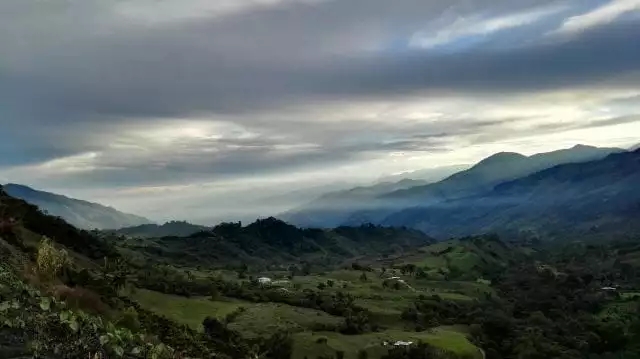
A view of a mountainous coffee farm in Colombia. Photo Source: Angie Molina
Altitude: a symbol of coffee quality?
Higher elevations are associated with sweeter, richer coffee flavors. But it is actually just a correlation, not an inevitable causal relationship. The real reason why coffee is better and tastier is the temperature.
Coffee trees grow more slowly at lower temperatures. Coffee cherries that contain the seed we call "coffee beans" also ripen more slowly. This means that there is more time to produce a richer coffee flavor.
On the other hand, there is some downside: coffee trees are less productive, need more care, and can only be harvested later in the year. Coffee is not suitable to grow in a warm climate, but it is not too cold.
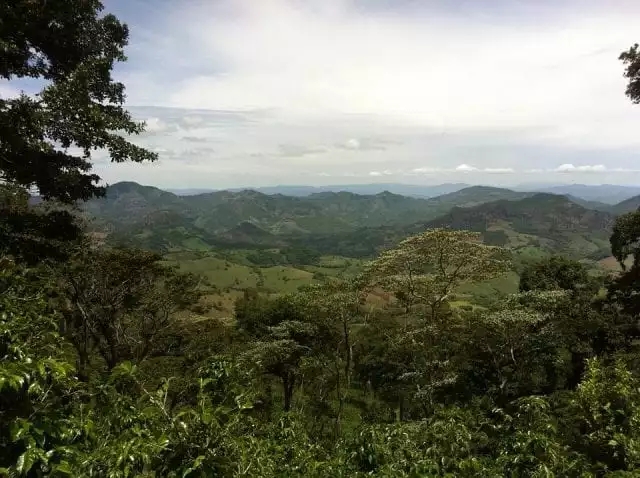
A view of a coffee plantation in Nicaragua.
More reasons to prove that a low temperature is better.
In colder temperatures, the growth of some pests and diseases will also be hindered. Mainly coffee leaf rust, this fungus can erode the leaves of coffee trees, thus preventing them from photosynthesis. In 2012, leaf rust destroyed coffee producers in Latin America, causing more than $1 billion in losses in just two years. However, as Emma Sage, scientific manager of SCA, points out, leaf rust is not without weaknesses-one of which is low temperatures.
In a 2012 SCAA blog post, Sage wrote that the best temperature for coffee leaf rust to grow is 21-25 ℃ and cannot survive below 15 ℃. The ideal temperature for a coffee tree to grow is 17-23 ℃, but it can grow less quickly at 14-30 ℃. This means that coffee leaf rust should be more difficult to cause at lower temperatures.
Similarly, coffee berry borers, which have caused hundreds of millions of dollars in damage, are most likely to occur in warm 20-30 ℃, according to a 2009 study.
Coffee farms with temperatures lower than those mentioned above (usually at higher altitudes) are less affected by coffee leaf rust, coffee berry borer or any other pest that is difficult to survive in cold climates. In the final cup test, this will result in fewer defects and less unpleasant flavor.
Of course, not all coffee varieties are susceptible to leaf rust. However, these varieties usually have a less-than-ideal flavor. This is because they have the blood of Robusta, which is hardy and tastes more bitter. The lower risk of diseases and insect pests has also prompted some producers to plant varieties of higher quality but less resistant.
However, it takes enough time and patience to fully explain these complexities. For these reasons, when asked why altitude is important, we tend to simplify the problem, saying only that higher elevations produce better coffee.
The problem, however, is that sometimes this is not the case.
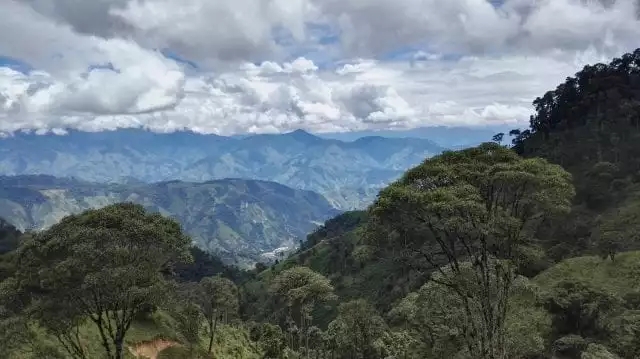
A view of a coffee farm in Colombia. Photo Source: Angie Molina
What are coffee beans like at low elevations?
Just as altitude affects temperature, so does latitude. Take Colombia, for example, which is famous for its high-quality high-altitude coffee. Coffee farms in areas such as Nari ñ o are only 100 miles from the equator, but according to the Colombian Federation of Coffee growers, it is 2300 metres above sea level. How did it turn out? Bright acidity, sweetness and obvious aroma-all add more good flavor to the coffee.
But if we go to Cerrado Mineiro in southern Brazil, we find that the coffee farms here are much lower: only 8 to 1300 meters above sea level. According to the Brazilian Association of Coffee producing areas, the average temperature in the region is 23 ℃, which is an ideal condition for coffee growth.
Then why do we despise coffee beans with an altitude of only 1100 meters, even if the temperature is still relatively low?
Of course, it is not just the latitude that can affect the local temperature. The Galapagos Islands straddle the equator, and coffee farms are only 200m-300m above sea level, but the temperature is similar to Cerrado Mineiro, thanks to the cold air brought by the Humboldt current from Chile and Peru. Coffee beans produced here tend to have a moderately rich caramel sweetness.
It is unfair to focus only on altitude. Although it can indicate the quality of coffee to some extent, without a complete geographical background-an understanding of local latitudes, climatic conditions, etc.-it may become meaningless. It applies to farms in specific areas, but it should not be used on beans in places such as Hawaii, Venezuela, Indonesia and Yemen.
So why do we rely on altitude instead of temperature? Because, unlike altitude, temperature fluctuates from season to season, from day to day, or even from hour to hour. Even if the scale is not perfect, we still need to know the growth rate of coffee beans. It affects the flavor, aroma and ideal roasting properties of coffee.
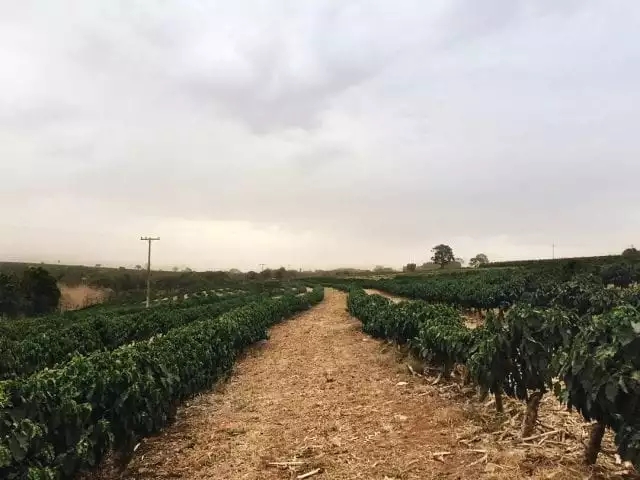
A coffee farm in Brazil. Photo Source: Ana Valencia
How does altitude affect coffee beans?
Bakers have a better way to measure the concept of coffee grown at low temperatures or high altitudes: density or hardness. Slow-growing coffee beans are hard or high-density, while those that grow fast are soft or low-density. Unfortunately, the coffee industry does not have a unit of density measurement (some countries refer to coffee beans grown above a certain height as hard beans or very hard beans, but this returns to the original problem: the ideal altitude varies from country to country and region). However, the idea of measuring density does break the link between height and quality.
This is because bakers, even raw bean buyers, baristas and ordinary consumers, need information about the density of coffee beans. Because slow growth will not only bring more complex flavor, it will also affect the physical composition of beans.
As Zach Daggett said in 2015, low-density raw beans tend to have open cracks. The beans with higher density have airtight cracks.
But if we look inside the coffee beans, there is a bigger difference: low-density beans have more cavitation. This means that during baking, heat is transferred more slowly and unsteadily in the beans. Therefore, the roaster should use a lower temperature to avoid burning beans.
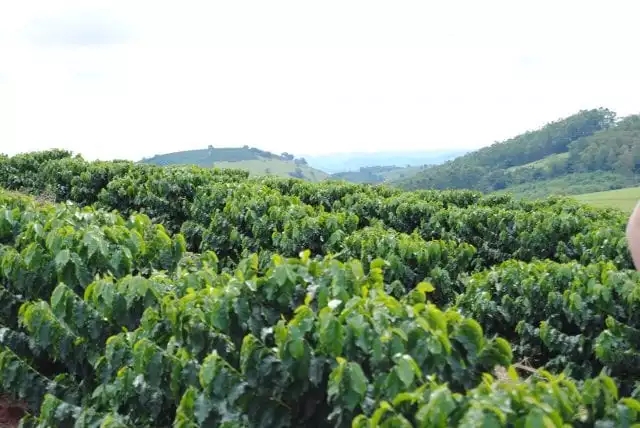
A coffee farm in Brazil. Photo Source: Julio Guevara
Altitude: only part of the quality of coffee
It may be a little big and small for us, but is altitude really that important?
The quality of coffee is very complicated. It is affected by many factors: coffee varieties, planting and processing methods, soil quality, altitude, local climate and annual changes, storage and export conditions, roasting, brewing.
However, the growth rate or how fast coffee cherries grow can have a significant impact on the flavor of coffee (not to mention how it is roasted). For this reason, altitude is a valuable piece of information, but we need to understand it in the context of latitude and local climate.
Author: Tanya Newton
Translated from: Perfect Daily Grind
Important Notice :
前街咖啡 FrontStreet Coffee has moved to new addredd:
FrontStreet Coffee Address: 315,Donghua East Road,GuangZhou
Tel:020 38364473
- Prev
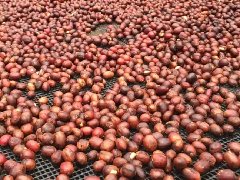
Exploration of a new mode of coffee production: is it better for farmers to sell whole coffee fruits instead of coffee beans?
Professional coffee knowledge exchange more coffee bean information Please follow the coffee workshop (Wechat official account cafe_style) generally people will think that small farmers need to cooperate and collect the harvested fruit, processing, direct trade, so that they can be competitive and profitable in the coffee industry. As long as small farmers are not connected to certified cooperatives, cup testing laboratories, processing plants and access.
- Next
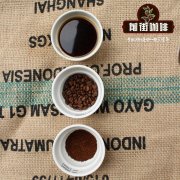
[flavor Flavor]: overall impression of aroma, acidity, and mellowness?
[flavor Flavor]: the overall impression of aroma, acidity, and mellowness. [acidity Acidity]: the strong acidity of all coffee grown on the plateau. The sour here is different from bitterness and Sour, and has nothing to do with pH value. It refers to a fresh and lively quality that promotes coffee to exert its functions of invigorating the mind and clearing the taste. The acidity of coffee
Related
- Beginners will see the "Coffee pull flower" guide!
- What is the difference between ice blog purified milk and ordinary milk coffee?
- Why is the Philippines the largest producer of crops in Liberia?
- For coffee extraction, should the fine powder be retained?
- How does extracted espresso fill pressed powder? How much strength does it take to press the powder?
- How to make jasmine cold extract coffee? Is the jasmine + latte good?
- Will this little toy really make the coffee taste better? How does Lily Drip affect coffee extraction?
- Will the action of slapping the filter cup also affect coffee extraction?
- What's the difference between powder-to-water ratio and powder-to-liquid ratio?
- What is the Ethiopian local species? What does it have to do with Heirloom native species?

